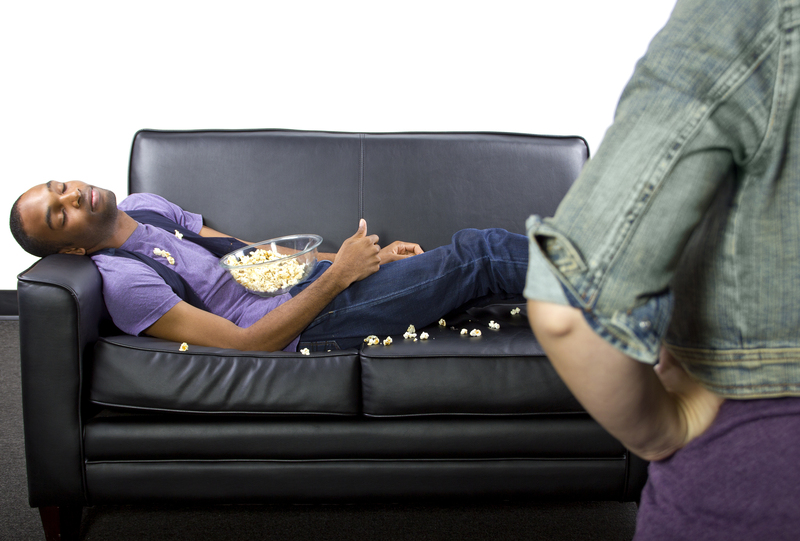Secure and Sound: Tips for Moving Your Bed and Mattress
Posted on 10/06/2025
Secure and Sound: Tips for Moving Your Bed and Mattress
Relocating can be both exciting and daunting, especially when it comes to moving large furniture pieces. Among the most challenging yet essential items are your bed and mattress. Ensuring their safety during relocation is vital not just for your comfort, but also for maintaining their longevity. In this detailed guide, we'll walk you through practical, effective tips for moving your bed and mattress securely and soundly.
Why Moving Your Bed and Mattress Requires Special Attention
Your bed and mattress are foundational elements for a good night's sleep and overall well-being. Unlike smaller belongings, they are bulky, oddly shaped, and can be easily damaged during a move. Whether you're going across town or to another state, prioritizing the safety of your sleeping setup will save you time, money, and hassle later on.
- Mattresses are susceptible to stains, tears, and bending, which can compromise their comfort and hygiene.
- Bed frames often have intricate parts that are prone to damage or loss if not handled properly.
- Improper handling can void mattress warranties or damage supports.
Mastering the art of securely moving your bed and mattress is key to a smooth, stress-free transition.

Preparation: Getting Ready for the Move
1. Gather Necessary Supplies
The first step to a successful move is organization. Having the right materials keeps your bed and mattress safe, clean, and intact.
- Mattress bag or cover: Protects against dirt, moisture, and pests.
- Moving blankets: Shields the bed frame from scratches and dings.
- Plastic wrap or bubble wrap: Especially useful for delicate headboards or slats.
- Sturdy boxes and plastic bags: For storing screws, bolts, and small parts.
- Packing tape, markers, and labels: For secure packaging and easy reassembly.
- Basic tools: Wrenches, screwdrivers, and Allen keys suited for disassembling your specific bed type.
Tip: If possible, use mattress bags specifically designed for your mattress size for maximum protection.
2. Clear the Surrounding Area
Thoroughly clear the space around your bed and mattress. Remove nightstands, lamps, or rugs that could obstruct movement or cause accidents. This not only speeds up the disassembly process but also prevents potential injuries or property damage.
Disassembly: Breaking Down Your Bed Frame
1. Strip the Bed Completely
Take off all bedding, pillows, mattress toppers, and protectors. Pack these items separately in labeled boxes or bags to keep them organized and clean.
2. Disassemble the Bed Frame
If your bed frame comes apart, carefully follow the manufacturer's disassembly instructions. Typically, you'll need to:
- Remove the headboard, footboard, and side rails.
- Unscrew and detach the slats or platform.
- Separate the components neatly.
Keep all hardware in plastic bags, label them, and tape each bag to the corresponding bed part; this makes reassembly hassle-free at your new home.
Photograph each step during disassembly to help with reassembly later.
3. Protect Bed Components
Wrap fragile or delicate parts like upholstered headboards or carved wood in moving blankets or bubble wrap. Tightly secure with plastic wrap and packing tape without covering any fabric or painted areas with adhesive directly.
How to Properly Pack Your Mattress
1. Clean and Air the Mattress
Before placing your mattress in a cover or bag, vacuum and air it out for a few hours. This prevents trapped odors and reduces the risk of introducing pests like bed bugs to your new location.
2. Use a Mattress Protector or Moving Bag
Insert your mattress into a heavy-duty mattress bag designed to resist tears and moisture. If your bag has a zipper, ensure it's fully closed. For added protection, consider double-bagging or taping the edges for a tight seal.
3. Keep the Mattress Upright When Moving
Move your mattress on its side (vertically), which preserves its shape and internal structure. Avoid bending or folding your mattress, especially for innerspring or hybrid types, unless the manufacturer specifies it's safe to do so (e.g., some foam mattresses may allow gentle folding for a short period).
Techniques and Tools: Moving the Bed and Mattress Safely
1. Use Proper Lifting Techniques
Beds and mattresses are heavy and cumbersome. Always lift with your legs, not your back, and keep movements smooth to avoid injury. For queen-sized or larger beds, enlist the help of a friend or hire professionals.
- Keep your back straight and bend your knees.
- Lift slowly and avoid twisting while holding weight.
- Communicate with your partner/co-mover to coordinate steps or turns.
2. Utilize Moving Straps and Dollies
Moving straps can relieve pressure from your arms and back, making heavy beds much easier to maneuver. A furniture dolly is particularly helpful for bed frames or box springs, minimizing floor drag and potential damage to both flooring and furniture.
Don't have these tools? Consider renting them from a local moving supply company. Investing in the right equipment reduces the risk of accidents and damage.
3. Maneuvering Through Tight Spaces
Measure doors, hallways, and staircases before moving your bed and mattress to ensure they'll fit through. Plan your path in advance and remove any obstacles. For particularly tight turns or staircases, pivot the mattress gently and move frame components one at a time.
Transportation: Securing Bed and Mattress in the Moving Truck
1. Place the Mattress Properly in the Truck
For optimal security, stand the mattress up along the truck's long side wall. This method prevents bending, maximizes space, and keeps the mattress out of harm's way. Use ratchet straps or rope to fasten the mattress snugly against the wall so it doesn't fall during transit.
2. Load Bed Components Carefully
- Lay flat or stand upright: Depending on the size, standing bed slats or rails upright can save space.
- Cushion delicate parts: Place pillows or moving blankets between ornamental wood or upholstery and hard surfaces.
- Separate heavy items: Don't stack heavy boxes or furniture on top of your mattress or fragile bed parts.
3. Protect Against Shifting
To avoid shifting during the drive, fill gaps around the mattress and bed pieces with soft items like bedding, towels, or cushions. This added layer also prevents scratches and dents.
Special Considerations: Moving Different Types of Beds and Mattresses
1. Memory Foam and Latex Mattresses
These are generally more flexible, but still require special care:
- Avoid folding for long periods, as this can cause permanent deformation.
- Use a thick, puncture-resistant mattress bag due to their vulnerability to tears.
- Support the entire mattress when carrying to prevent sagging.
2. Innerspring and Hybrid Mattresses
Heavier and less flexible, these must be kept upright:
- Never fold or roll them unless specifically allowed by the manufacturer.
- Keep vertical and avoid stacking to protect the springs and internal structure.
- Double-check that straps aren't too tight, which might bend coils.
3. Adjustable Bed Frames
These require disconnection of motors and electronics:
- Unplug and remove batteries before moving.
- Secure cords and remote controls in labeled bags.
- Take photos or notes on electronic connections for easy setup at your new home.
4. Platform and Storage Beds
With more parts than standard frames, these need meticulous labeling and packing. Disassemble any drawers or storage compartments and keep small hardware together.
Reassembly: Setting Up in Your New Space
1. Unpack and Inspect Each Component
After arrival, discard any dirty or damaged protective coverings. Check each piece for signs of damage before reassembling. Clean the mattress again if needed and air it out before making the bed.
2. Follow the Reverse Order for Assembly
Use your photos, notes, and labeled hardware to rebuild the bed frame methodically. Attach headboards, footboards, and slats first before laying the mattress on top.
3. Allow the Mattress to Settle
Give your mattress an hour or two to regain its original shape, especially if moved in cold weather or stored slightly bent. Consider replacing any worn-out bedding to complement your fresh start!
Professional vs. DIY: Should You Hire Movers?
While moving your bed and mattress yourself can save money, hiring professionals offers peace of mind, especially for larger items or long-distance moves. Movers have the expertise, equipment, and insurance to protect your investment. If you do choose DIY: Enlist helpers, rent quality equipment, and allow extra time for careful packing and transportation.

Frequently Asked Questions on Moving Beds and Mattresses
- Q: Can I fold my spring mattress for transport?
A: No, folding a spring mattress can permanently damage the structure. Always keep it upright. - Q: How do I protect my mattress from pests during a move?
A: Use a sealed, high-quality mattress bag. Clean both your old and new locations thoroughly. - Q: Is it worth hiring movers for just my bed and mattress?
A: If you own expensive or heavy items, professional movers provide value through safe transport and insurance coverage.
Conclusion: Move Securely and Sleep Soundly
Moving beds and mattresses may seem overwhelming, yet with the right planning, tools, and knowledge, you can ensure these important pieces arrive at your new home safe and sound. Remember: preparation, protection, and proper techniques are the keys to keeping your bed and mattress secure during any move.
Ready to embark on your move? Follow these comprehensive tips for moving your bed and mattress to guarantee a comfortable sleep in your new space. Protect your investment--so you can rest easy no matter where you wake up next!



